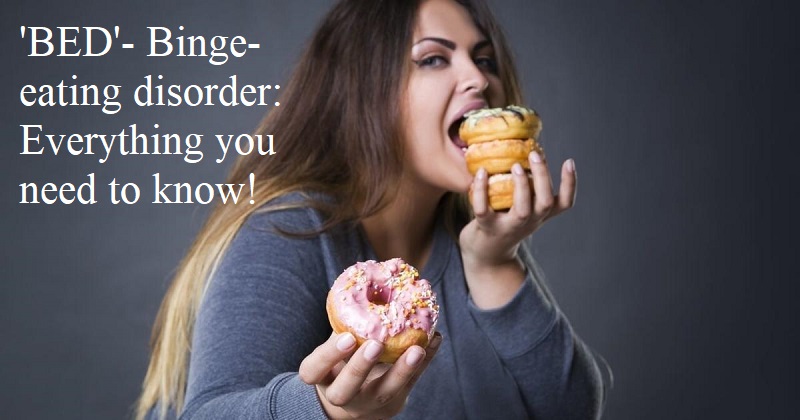
When trying to sate your midnight desires, the word ‘binge-eating’ is no longer one that can be casually used. The Diagnostic and Statistical Manual for Mental Disorders, Fifth Edition, now recognises a brand-new ailment termed binge-eating disorder (BED) as a mental illness (DSM -5).
BINGE-EATING DISORDER (BED)
BED is characterised by excessive calorie intake and dietary inability. But this problem goes beyond just a food issue because it’s also associated with physical and mental illness. Due of its connections to anorexia nervosa and bulimia nervosa, it is linked to considerable psychological comorbidity.
SYMPTOMS
According to DSM-5, binge-eating episodes are linked to at least three or more of the symptoms listed below:
- Consuming food significantly faster than usual.
- Consuming food till one is uncomfortable full.
- Consuming enormous quantities of food even when one is not physically hungry.
- Eating by oneself when one feels ashamed of how much they are eating.
- Disgust with oneself, depression, or feeling extremely guilty after overindulging.
At least two days per week for six months, or at least one day per week for three months, are spent binge-eating. According to the DSM-5, binge eating is not solely related with anorexia nervosa or bulimia nervosa, nor is it linked to the frequent use of unhealthy coping mechanisms like fasting, purging, or extreme exercise.
If BED episodes occur once to three times a week, it is thought to be mild. BED episodes can occur four to seven times per week in mild instances and eight to thirteen times per week in severe cases. BED episodes may happen up to 14 times per week in the worst-case scenario.
TREATMENT
CBT (Cognitive Behavioral Therapy) and DBT (Dialectical Behavioral Therapy) are two types of BED treatments. A novel method of treating BED was discovered this year by researchers at the Perelman School of Medicine at the University of Pennsylvania. A little gadget created by researchers recognises activity in the brain associated with food cravings and reacts by electrically stimulating that area. Signals that trigger cravings are disturbed by the device’s electrical shocks.

Post Your Comments